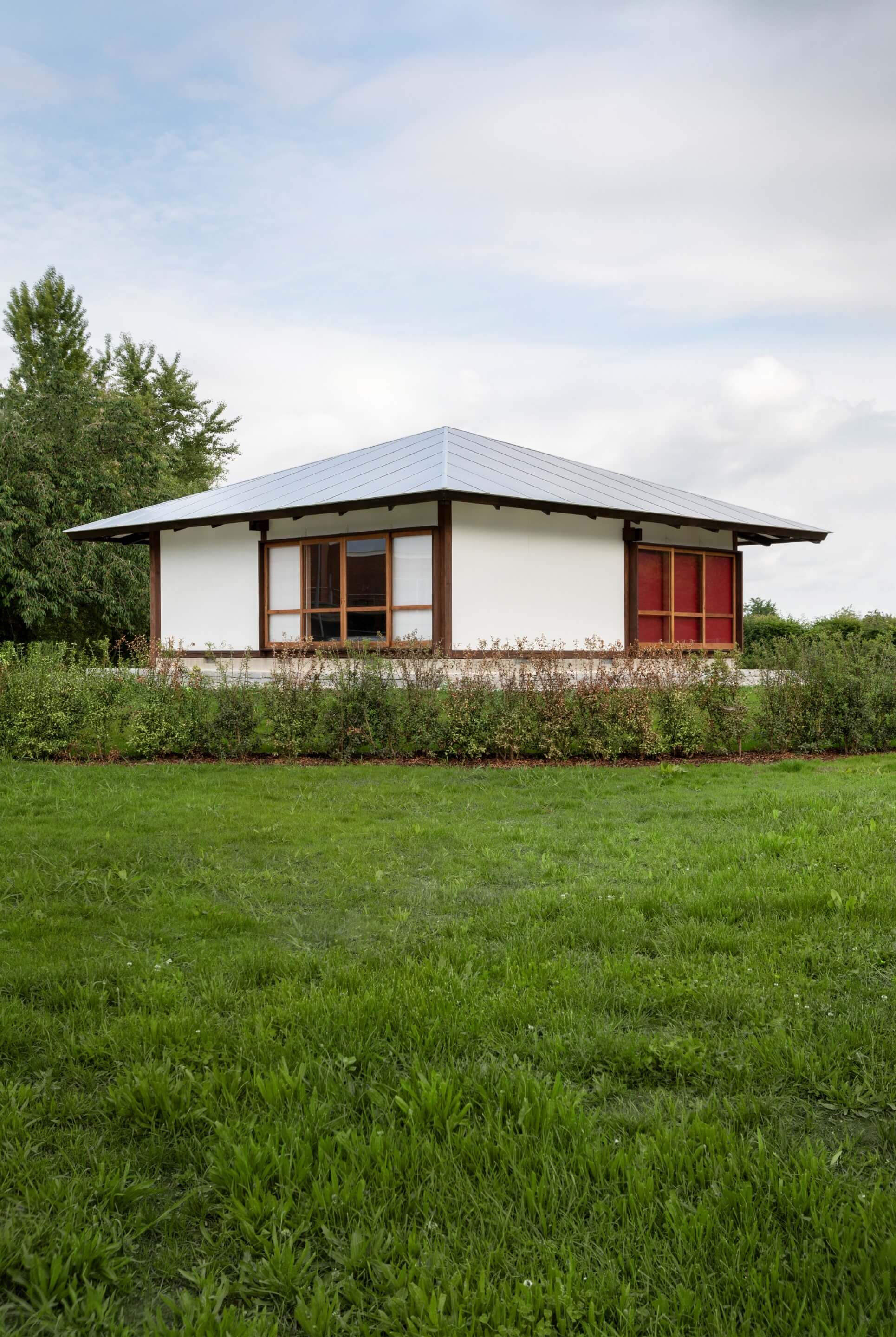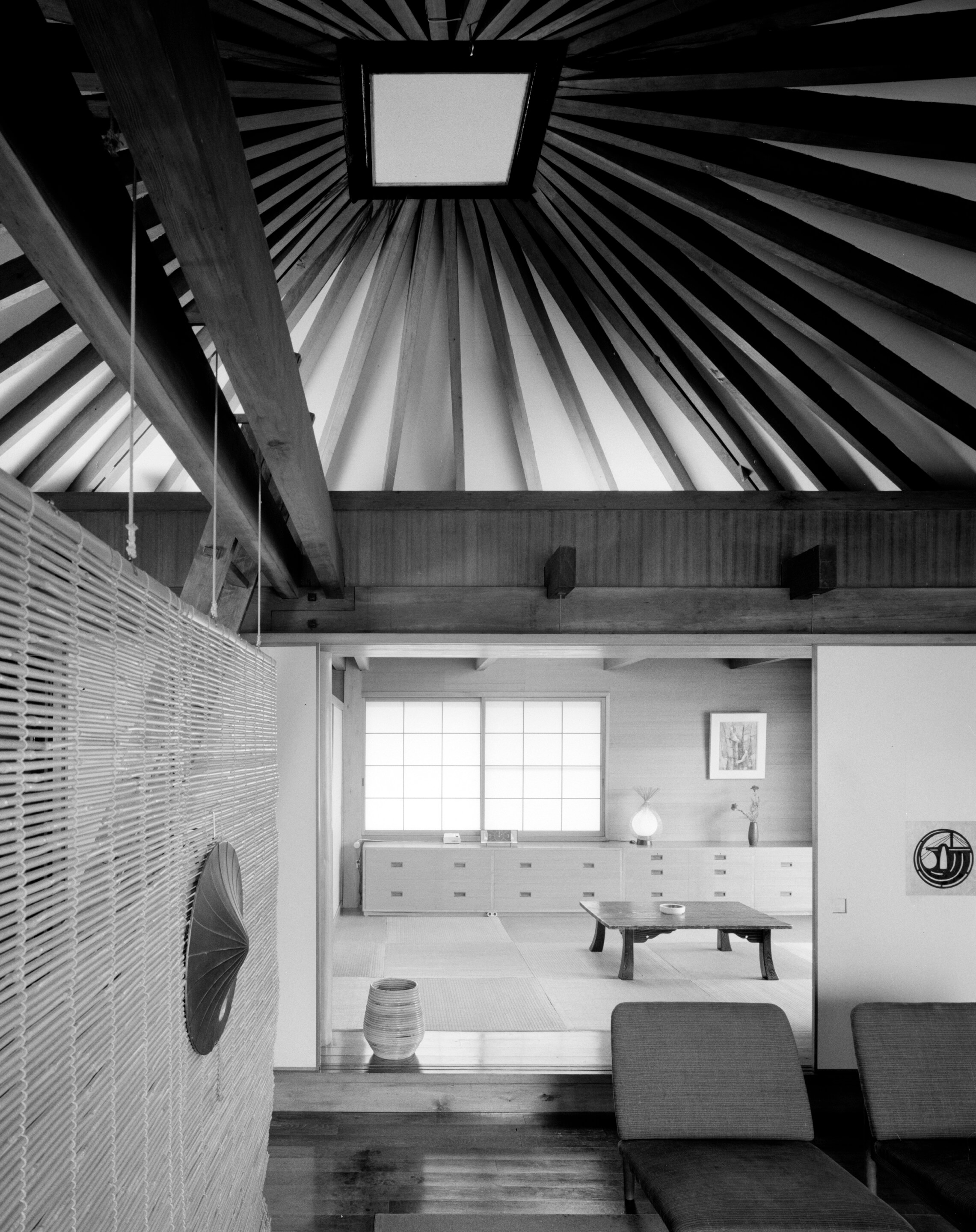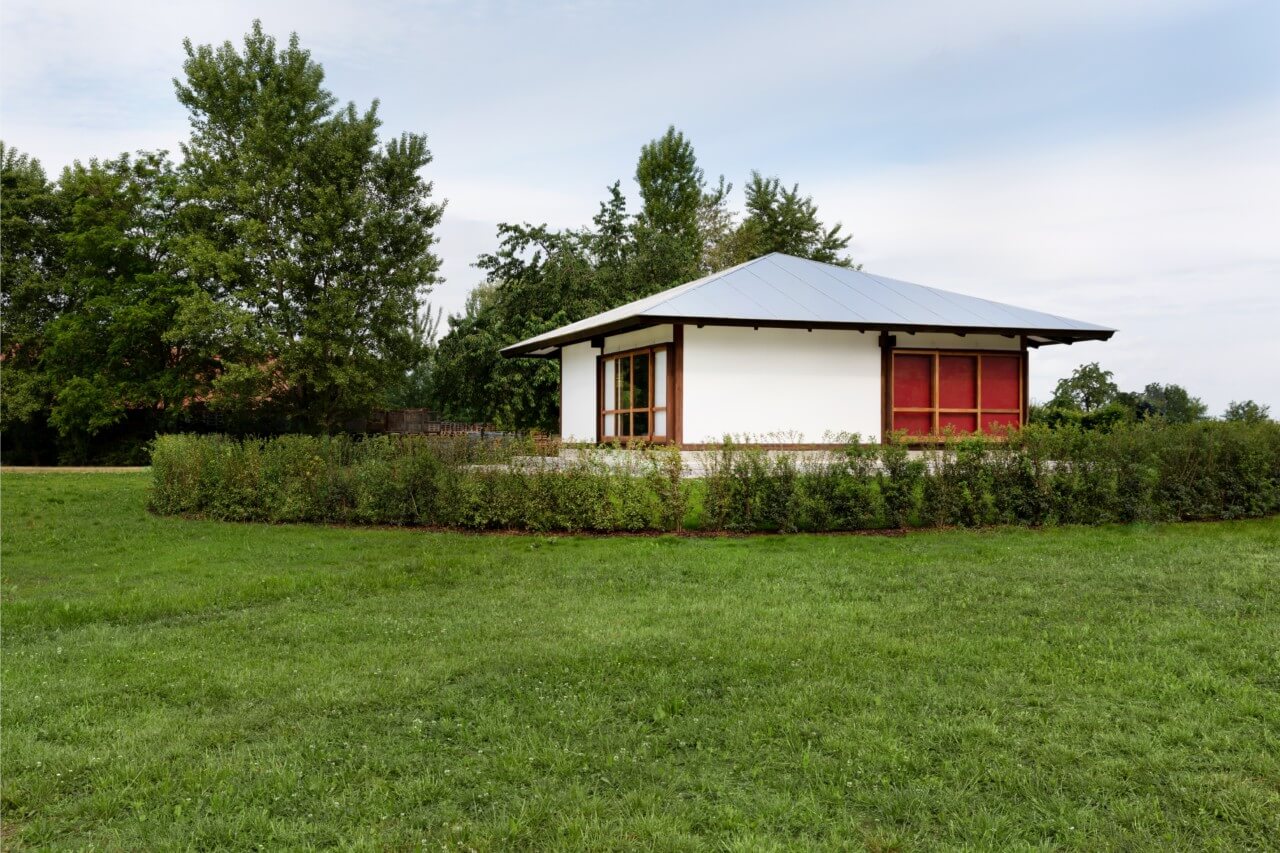Once imperiled by a Tokyo roadway project, an essential early work of celebrated postwar Japanese architect Kazuo Shinohara is now on public view at Vitra’s corporate campus-slash-architecture park in Weil Am Rhein, Germany, near the Swiss city of Basel. The unveiling of the modest timber residence, completed in 1961 and known as Umbrella House, follows a meticulous disassembly and reconstruction effort led by the venerable Swiss furniture maker in collaboration with the Tokyo Institute of Technology (Shinohara’s alma mater) that first kicked off in September 2021.
Umbrella House is the third historic structure to be re-homed at the Vitra Campus, joining a 1953 gas station by Jean Prouvé (installed in 2003) and a 1975 modified geodesic dome structure designed for Charter Industries by Thomas C. Howard in collaboration with Buckminster Fuller (installed in 2000). Contemporary buildings on Vitra’s sprawling Weil Am Rheim compound include, among others, Herzog & de Meuron’s VitraHaus, Frank Gehry’s Vitra Design Museum, Taodo Ando’s Conference Pavilion, and factory buildings from Álvaro Siza, SANAA, Nicholas Grimshaw, and Gehry. Other campus highlights include a Jasper Morrison-designed bus stop, Zaha Hadid’s fire station, Carsten Höller’s Vitra Slide Tower, and a trove of smaller structures and installations designed by the likes of Thomas Schütte, Tobias Rehberge, Renzo Piano Workshop, Ronan and Erwan Bouroullec, and others.

As for Umbrella House, it has been rebuilt off Charles-Eames Strasse near Prouvé’s gas station and a garden designed by Piet Oudolf that opened to the public last summer. Moving forward, the compact wooden structure will serve as a venue for intimate gatherings.
As detailed in a press announcement unveiling the new addition to the Vitra Campus, Umbrella House was built using wooden post-and-beam methods with Japanese cypress, Japanese Pine, and Oregon pine and features a pyramidic roof structure that references traditional temple architecture in Japan. Lauded by Vitra as a “masterpiece” of Shinohara’s First Style, the cement fiberboard-clad Umbrella House is notable for melding motifs associated with vernacular Japanese architecture with low-cost and readily available materials. This approach to residential architecture, as noted by Vitra, “made a novel and inspirational contribution to the architectural discourse of 1960s Japan.”
In an October 1962 edition of Japanese architecture journal Shinkenchiku Shinohara explained: “The strength of my conviction that ‘A House is a Work of Art’ was born of the struggle with this small house. I wished to express the force of space contained in the doma (earthen-floor room) of an old Japanese farmhouse, this time by means of the geometric structural design of a karakasa (oiled-paper Japanese umbrella).”

Constructed in Tokyo’s largely residential Nerima neighborhood as the smallest of Shinohara’s First Style abodes (its total floor area is just under 600 square feet), Umbrella House was slated to be demolished to make way for a new road until Vitra stepped in. The structure was painstakingly deconstructed in the summer of 2020 and its individual components were subsequently shipped to Weil Am Rhein for reassembly. Interior highlights of the space include five fusama (sliding doors) separating the main living area from the tatami room adorned with prints by Japanese artist Setsu Asakura. The home also features a bathroom, small kitchen, and lofted storage area in the tatami room. The furnishings were designed by Shinohara and designer Katsuhiko Shiraishi. The reconstructed Umbrella House features a mix of original furnishings and replicas.
“It can make sense to move a building if its construction easily allows this, and of course it must fit into the context of the new location” said Rolf Fehlbaum, Chairman Emeritus of Vitra, in a statement. “The Umbrella House meets both criteria: it is relatively simple to relocate and it connects with the strong Japanese presence—Tadao Ando, SANAA and soon Tsuyoshi Tane—on the Vitra Campus.”
The widely influential Shinohara was active as an architect up until his death in 2006 at the age of 81. In 2010, he was posthumously awarded the Golden Lion at the 12th Architecture Biennale in Venice. More information on the Umbrella House can be found here.















